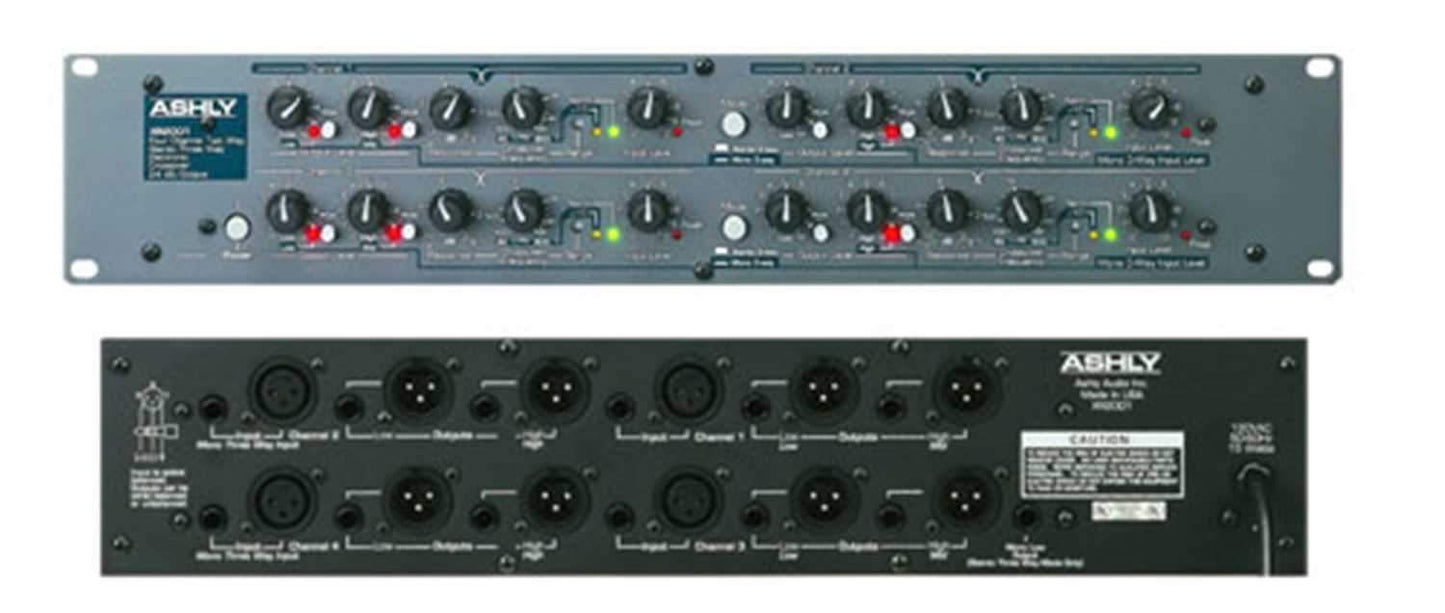ASHLY STEREO 3 WAY MONO 4 WAY CROSSOVER
The XR-2001 offers the unique ability to operate as astereo three-way or mono four- (or five-) way, or even asa four-channel two-way configuration for bi-amplifying onstagemonitor systems. All Ashly crossovers are based upon the same powerful state-variable filter circuit, which guarantees that two adjacent frequency band outputs always remain in phase. Our crossovers offer a number of useful and unusual features, including continuous tuning, a response control, and a unique output stage which maintains low noise at any level setting. These models also include a 200:1 tuning range, output mute switches, and both TRS and XLR connectors. Like other Ashly products, your crossover features low noise and distortion, active balanced inputs, a peak level indicator, a precision regulated power supply, protection against abnormal input or output conditions, and rugged mechanical construction. Conservative design and an unusually thorough procedure for quality control have earned Ashly a reputation for dependability in the recording, sound reinforcement, and broadcast fields.
Response Control, found adjacent to the crossover frequency control, adjusts the damping of the filter affecting the response shape of the filters at the crossover point. The dial calibrations refer to the amount of attenuation effected by the filter at the crossover frequency, i.e., a setting of 3dB means that the filter's high-pass and low-pass outputs are each "rolled off 3dB at the crossover point". This describes Butterworth filter response, or a gentle 3dB peak at the crossover point when the two filter output signals overlap. To obtain a flat signal, or "Linkowitz-Riley" response through the crossover region, set the Response control to "6". This attenuates each output of the filter by 6dB at the crossover point (two identical signals added together yield a +6dB increase). To obtain a notch at the crossover point, turn down the response control past "6" to best suit your needs.
The purpose of this control is to help offset the inaccuracies inherent in typical loudspeakers, thereby helping you to achieve a flat system response. NOTE: The Response control is not a "slope" control. A 24dB/octave crossover will always have a slope of 24dB/octave. The Response control only affects filter response shape in the immediate vicinity of the crossover frequency; the ultimate crossover slope is a fixed parameter.
Features:
- 5-Year Worry-Free Warranty
- 24dB Per Octave Slopes
- Variable Filter Response Allows Tuning-In Linkwitz-Riley or Other Filter Performances
- Summed Mono Output
- Output Mute Switches
- XLR and 1/4. Inputs and Outputs
- 20Hz Third Order Hi-Pass Filter
- Extra Wide Tuning Range
- Peak Overload Warning Lights
- Tamper-Proof Security Covers Optionally Available





